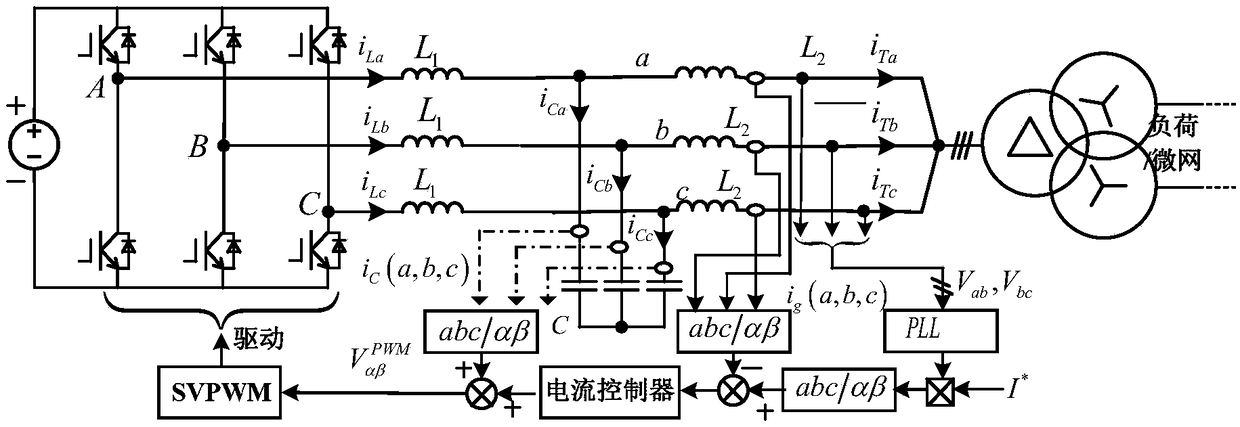Optimal delay compensation method for active damping of LCL-type converter
A technology of delay compensation and converter, applied in AC network circuits, AC networks to reduce harmonics/ripples, harmonic reduction devices, etc. Whether the phase margin or the amplitude margin can't stabilize the system, can't realize the optimal compensation and other problems, it can achieve good high-frequency harmonic suppression ability, improve the stability margin, and suppress the effect of resonance frequency shift and resonance peak
- Summary
- Abstract
- Description
- Claims
- Application Information
AI Technical Summary
Problems solved by technology
Method used
Image
Examples
Embodiment 1
[0116] Such as Figure 5 As shown, it is a comparison chart of the amplitude-frequency response of the system under ideal conditions, that is, when the delay time is zero, and under actual conditions, that is, considering the delay. It can be seen from the figure that the impact of delay on LCL resonance is firstly the frequency shift of the resonance, followed by the amplification of the resonance peak and the decline of the high-frequency noise attenuation ability.
[0117] Such as Image 6 As shown, it is the comparison diagram of the amplitude-frequency response of the ideal situation, the actual situation, and the system after lead compensation. According to the design scheme provided in step 4, a is set to 10. It can be seen from the figure that the resonance peak value of the system with lead compensation is significantly reduced. , and smaller than the ideal value, this is the feedback coefficient H i1 The settings leave a margin.
[0118] Such as Figure 7 As show...
PUM
 Login to View More
Login to View More Abstract
Description
Claims
Application Information
 Login to View More
Login to View More - R&D
- Intellectual Property
- Life Sciences
- Materials
- Tech Scout
- Unparalleled Data Quality
- Higher Quality Content
- 60% Fewer Hallucinations
Browse by: Latest US Patents, China's latest patents, Technical Efficacy Thesaurus, Application Domain, Technology Topic, Popular Technical Reports.
© 2025 PatSnap. All rights reserved.Legal|Privacy policy|Modern Slavery Act Transparency Statement|Sitemap|About US| Contact US: help@patsnap.com



